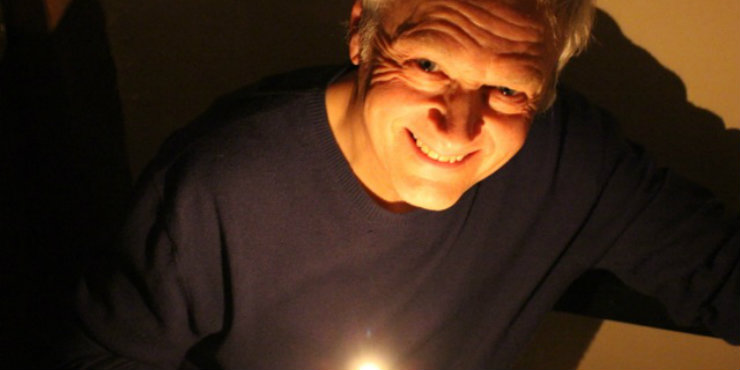
Phil Rickman is a bestselling British author of supernatural and mystery novels. He is the author of the Merrily Watkins series, which has been adapted for television. The 15th book in the series, currently titled For the Hell of It, is due out in October.
1. Who were your literary heroes and influences as you were growing up?
No surprises, I’m afraid. Started with Enid Blyton, moved on to Ian Fleming and then John le Carré, P. M. Hubbard… and then I sort of grew up and nothing much changed.
2. You have written two books about the Tudor scientist Dr John Dee. Is it true that you employed some unusual methods to research his life?
Well, they’re novels, so anything goes as long as it sounds as if it could be right.
John Dee’s family home was a house called Nant-y-groes, near Presteigne, in mid Wales, not far from where we live now. But Dee’s actually more associated with London - particularly Mortlake, on the Thames. A long way from me, but quite convenient for my friend Sir Richard Heygate, co-author of The Book of English Magic, and his motorbike. And so anything I needed to know about Dee that wasn’t in the biogs I asked Richard, without specifying the context, and he headed off to Mortlake and asked the man himself…
3. We first met Merrily Watkins in 1998. Did it feel like a bold step at the time writing about a female vicar?
Not really. Female vicars were still a comparatively new phenomenon in Britain. Odd things could happen to them. For the first Merrily Watkins novel, The Wine of Angels, I used a true story that I’d originally developed for a BBC Radio Four feature and realised could be altered to create what I was looking for. I just needed a youngish female vicar to toss into the mix. And the fact that Merrily’s fifteen year-old daughter was what was known then as a teen witch… if anything, that was the bold step.
4. Is there anything you can tell us about the latest Merrily Watkins book, For the Hell of It?
I’m still not certain that’s going to be what it’s called. I had that title before the story, but now the story’s taken over, and it’s not quite the same one.
It involves the poet William Wordsworth, who most people associate with the Lake District, his birthplace. In fact, much of Wordsworth’s poetic self-discovery took place in the Wye Valley in Herefordshire, where he had some strange experiences and - there’s reason to believe - almost became a Druid.
5. Has a book ever changed your life or made you think differently?
I’m not aware of Enid Blyton writing a series of ghost stories, but she came close in the ones about Barney, the circus boy, his ordinary middle class mates and the politically-incorrect spaniel, Loony. They were all set in places with a disturbing atmosphere and names beginning with R - The Ring o’ Bells Mystery, The Rubadub Mystery, etc. At the age of eight, I decided I wanted to write books a bit like those.
6. Do you have a message for your Suffolk library readers?
If you appreciate weird fiction… don’t move. I’ve only spent a couple of days in Suffolk but it’s definitely not only a spooky place because the great M. R. James grew up here. I never realised before spending a night in Long Melford that big churches with plain glass leaded windows become much more numinous when lit up after dark than small ones with coloured stained glass.
7. Can you tell us one thing your readers may not know about you?
I have a third nipple. The mark of the witch. It’s not very big, but a doctor confirmed that’s what it is.
And no, I’m not showing it to you.
